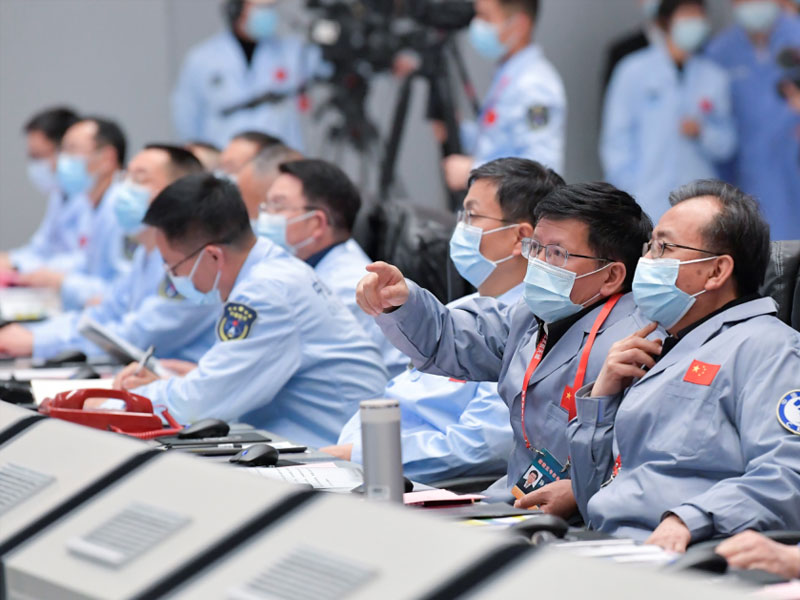UK becomes first to approve Casgevy genetic therapy for blood disorders
SOURCE: HTTPS://INTERESTINGENGINEERING.COM/
NOV 17, 2023
Beijing’s Strategic Blueprint Is Changing as Tensions Grow
SOURCE: FOREIGNPOLICY.COM
DEC 08, 2021

The Chinese Communist Party (CCP) has constructed a strategy that is predicated on both passively absorbing and actively acquiring technology from abroad. Although the tech outflow from the United States to China has undercut U.S. national security, stymying it is easier said than done—and Beijing’s playbook is evolving in response to heightening tensions between the two countries.
In a new framework we’re calling “E.P.I.C.,” we attempt to lay out the four key resources at the heart of U.S.-China competition today. These resources—equipment, personnel, information, and capital—represent the foundational tools that China uses in its push to amass comprehensive national power.
The first resource is equipment—most notably, advanced computer chips and the billion-dollar machines that make them. Beijing’s reliance on imported technologies extends well beyond foreign-designed semiconductors, including lidar systems for self-driving cars, engine housings for commercial aircraft, and reagents for gene editing kits, among others. However, despite its multibillion-dollar efforts to boost domestic production in many of these key fields, China still has a long way to go to produce them domestically.
In the 1990s, Beijing’s strategy to absorb foreign equipment revolved around requiring foreign businesses to set up joint ventures in China, then compelling them to share intellectual property with Chinese counterparts. For 30 years, the promise of Chinese market access has persuaded foreign investors to part with their IP and trade secrets—at times with disastrous consequences.
But bilateral technology investment has plummeted some 96 percent since 2016. To compensate for declining investment, Beijing has increasingly turned to shell companies and intermediary agents to source foreign components, reagents, and associated manufacturing equipment. In a recent study for Georgetown’s Center for Security and Emerging Technology (CSET), for example, one of us found that fewer than 10 percent of companies that supply the Chinese military with equipment are named in key U.S. export control and sanctions lists—and some make a business out of repackaging and reselling U.S.-origin equipment to sanctioned Chinese military units.
Although the CCP is taking drastic steps to secure China’s position as a science and technology powerhouse, it has struggled to build domestic supply chains for linchpin commodities like semiconductors and gas turbines. The bottom line is that China will likely remain reliant on foreign equipment well into the 2020s. What’s more, China’s path to foreign technology runs through such U.S. allies as Australia, Japan, South Korea, and the United Kingdom. This presents a strategic opportunity for the United States, which can coordinate with like-minded partners to restrict equipment exports or screen risky investments in particularly sensitive industries.
The second resource is people—talented personnel educated at universities worldwide, in all fields, but especially in the hard sciences.
During a high-level talent conference this September, Chinese President Xi Jinping placed significant emphasis on the role of the CCP in cultivating high-end talent, urging Chinese businesses to “foster a team of engineers who follow the party.” In fact, a CSET study from August demonstrated that China is rapidly outpacing the United States in terms of STEM Ph.D. growth, suggesting that some of Beijing’s efforts in science, technology, engineering, and math are bearing fruit. Still, as noted by the Chinese talent expert David Zweig, China’s quantitative advantages do not necessarily translate into a higher quality of education.
Since the Cultural Revolution gutted China’s education system in the late 1970s, Chinese leaders have been desperately working to reverse the country’s chronic brain drain. By one estimate, between 1978 and 2007, fewer than a quarter of the 1.2 million Chinese who left the country to study or conduct research abroad ever returned. What’s more, among the 390,000 Chinese students who came to study in the United States in 2021, 80 percent of STEM students will stay and likely join the U.S. workforce.
China’s efforts to attract talent have historically focused on recruiting both members of the Chinese diaspora and experts with no ties to the country. Through conditional scholarships and lucrative talent recruitment programs, Beijing has succeeded in luring several thousand of its talented scholars back to the mainland—but not without first shelling out billions of dollars in signing bonuses and offering up prestigious, tenure-track positions at elite Chinese universities. The Thousand Talents Program, perhaps Beijing’s best-known recruitment effort, offered participants hundreds of thousands of dollars in wages, living expenses, and financial assistance for research facilities.
LATEST NEWS
Artificial Intelligence
Eerily realistic: Microsoft’s new AI model makes images talk, sing
APR 20, 2024
WHAT'S TRENDING


Data Science
5 Imaginative Data Science Projects That Can Make Your Portfolio Stand Out
OCT 05, 2022

SOURCE: HTTPS://INTERESTINGENGINEERING.COM/
NOV 17, 2023
SOURCE: HTTPS://GENETICLITERACYPROJECT.ORG/
SEP 05, 2023
SOURCE: HTTPS://WWW.SCIENCEDAILY.COM/
AUG 07, 2023
SOURCE: HTTPS://WWW.SCIENCEDAILY.COM/
JUL 24, 2023
SOURCE: HTTPS://NEWS.MIT.EDU
JUL 20, 2023
SOURCE: BIOSPACE.COM
OCT 27, 2022